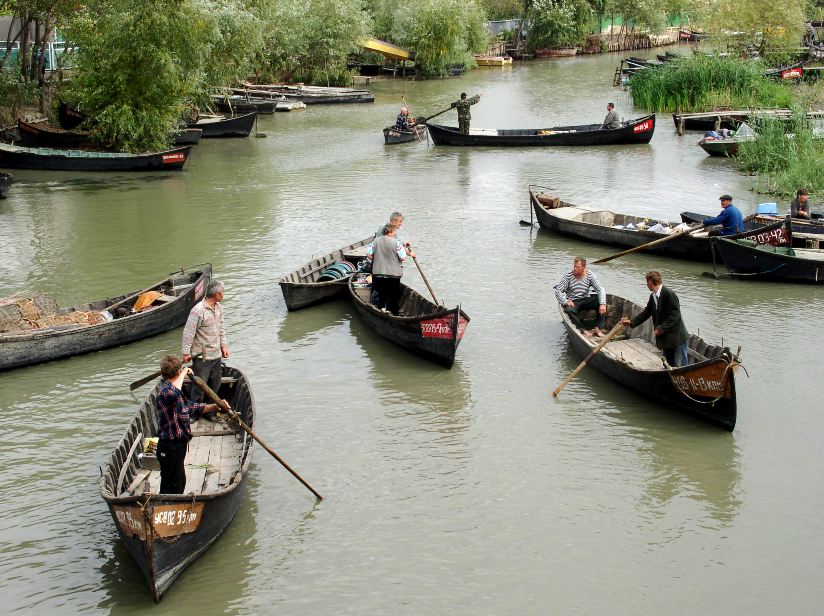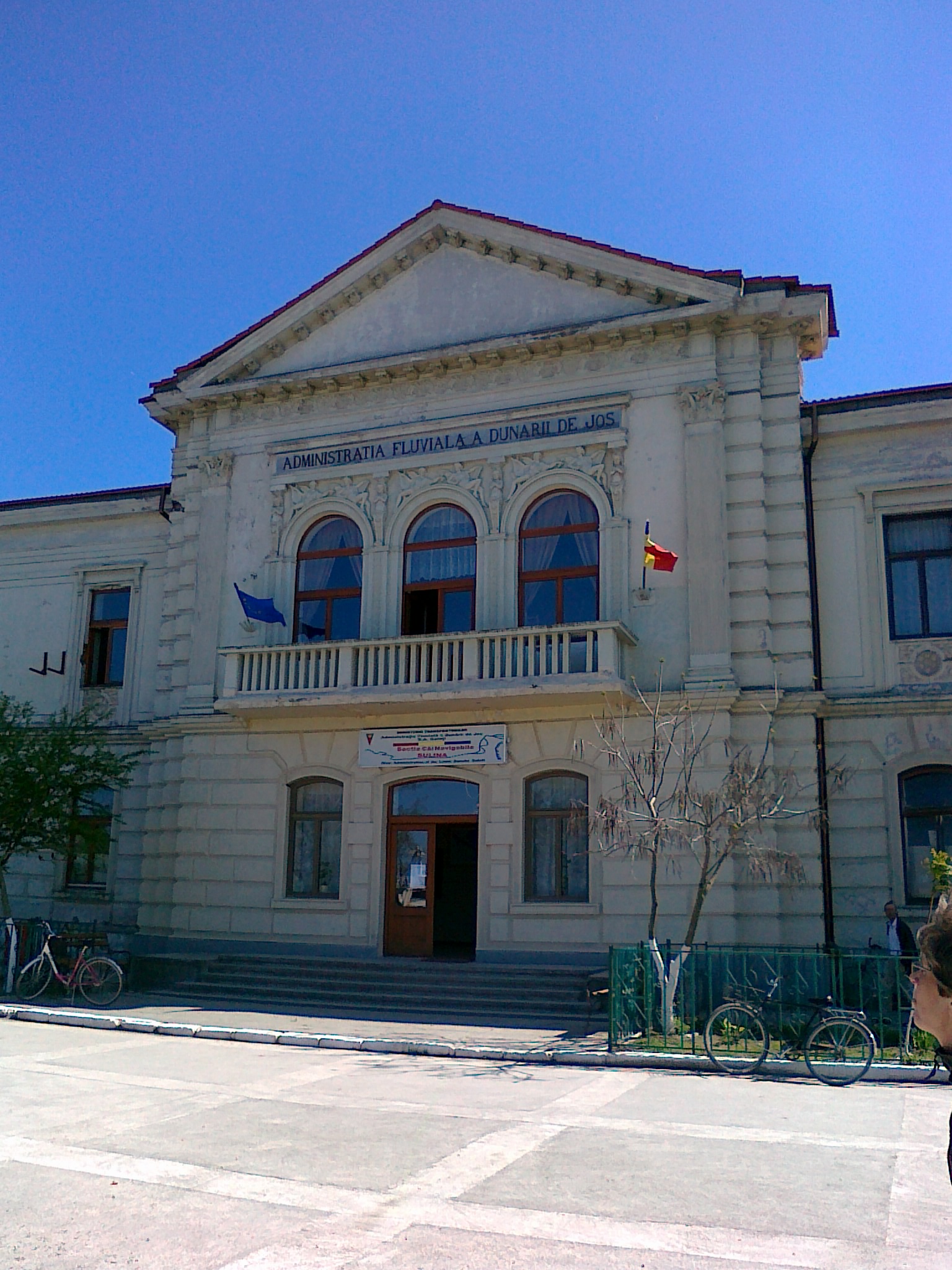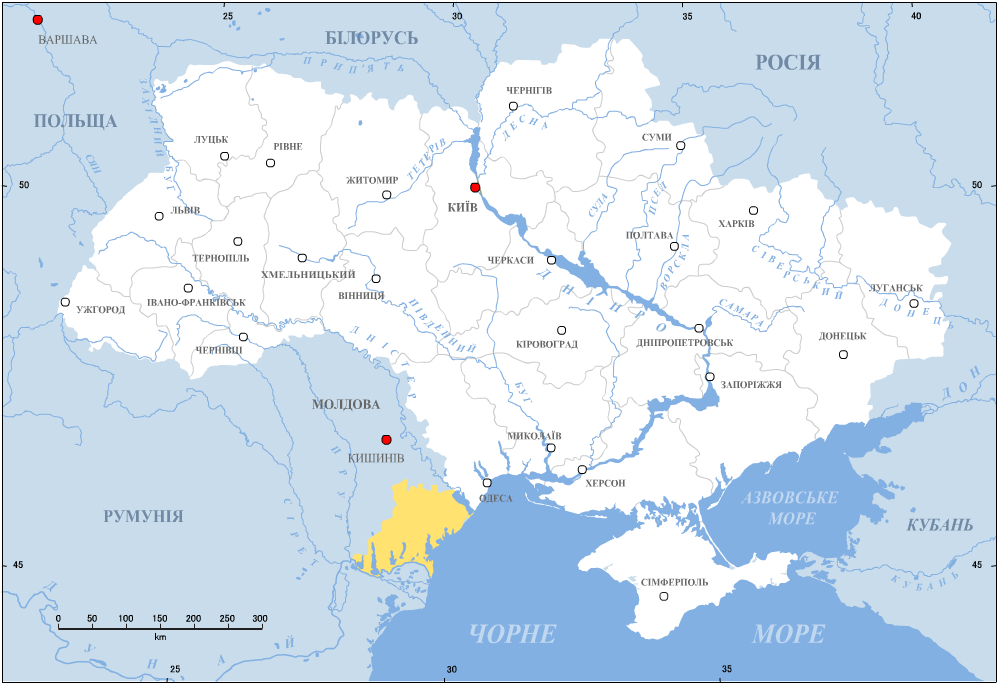|
Lipovan
, flag = Flag of the Lipovans.png , flag_caption = Flag of the Lipovans , image = Evstafiev-lipovane-slava-cherkeza.jpg , caption = Lipovans during a ceremony in front of the Lipovan church in the Romanian village of Slava Cercheză in 2004 , population = , region1 = , pop1 = 23,487 , ref1 = , region2 = , pop2 = , ref2 = , region3 = , pop3 = , ref3 = , region4 = , pop4 = 700–800 , ref4 = , religions = Old Believers (Eastern Orthodox Christianity) , languages = Russian, Romanian, Ukrainian, Bulgarian , related = Russians , footnotes = The Lipovans or Lippovans (russian: Липовáне; ro, Lipoveni; uk, Липовани; bg, Липованци) are ethnic Russian Old Believers living in Romania, Ukraine, Moldova and Bulgaria who settled in the Principality of Moldavia, in the east of the Principality of Wallachia (Muntenia), and in the regions of Dobruja and Budjak during the 17th and 18th centuries. According to the 2011 Romanian census, ... [...More Info...] [...Related Items...] OR: [Wikipedia] [Google] [Baidu] |
Old Believers
Old Believers or Old Ritualists, ''starovery'' or ''staroobryadtsy'' are Eastern Orthodox Christians who maintain the liturgical and ritual practices of the Russian Orthodox Church as they were before the reforms of Patriarch Nikon of Moscow between 1652 and 1666. Resisting the accommodation of Russian piety to the contemporary forms of Greek Orthodox worship, these Christians were anathematized, together with their ritual, in a Synod of 1666–67, producing a division in Eastern Europe between the Old Believers and those who followed the state church in its condemnation of the Old Rite. Russian speakers refer to the schism itself as ''raskol'' (), etymologically indicating a "cleaving-apart". Introduction In 1652, Patriarch Nikon (1605–1681; patriarch of the Russian Orthodox Church from 1652 to 1658) introduced a number of ritual and textual revisions with the aim of achieving uniformity between the practices of the Russian and Greek Orthodox churches. Nikon, having no ... [...More Info...] [...Related Items...] OR: [Wikipedia] [Google] [Baidu] |
Russians
, native_name_lang = ru , image = , caption = , population = , popplace = 118 million Russians in the Russian Federation (2002 ''Winkler Prins'' estimate) , region1 = , pop1 = approx. 7,500,000 (including Russian Jews and History of Germans in Russia, Ukraine and the Soviet Union, Russian Germans) , ref1 = , region2 = , pop2 = 7,170,000 (2018) ''including Crimea'' , ref2 = , region3 = , pop3 = 3,512,925 (2020) , ref3 = , region4 = , pop4 = 3,072,756 (2009)(including Russian Jews and Russian Germans) , ref4 = , region5 = , pop5 = 1,800,000 (2010)(Russian ancestry and Russian Germans and Jews) , ref5 = 35,000 (2018)(born in Russia) , region6 = , pop6 = 938,500 (2011)(including Russian Jews) , ref6 = , region7 ... [...More Info...] [...Related Items...] OR: [Wikipedia] [Google] [Baidu] |
Aydemir
Aydemir ( bg, Айдемир, also ''Aidemir'', ''Ajdemir'') is a village in northeastern Bulgaria, part of Silistra Municipality, Silistra Province. Aydemir has 5711 inhabitants in 2016, down from 9095 short after the fall of communism in 1992. It is the second most populous village in Bulgaria: the village of Lozen took the lead as its population grew up to 6252 people while Aydemir lost many inhabitants in the same period. Aydemir lies at , 31 m above sea level. The village is located in the valley of the Danube, 3 km south of the river and 8 km west of Silistra, on the road from Silistra to Rousse. The mayor is Rumen Angelov. Aydemir is divided into three parts: the centre, the quarter of Delenkite and the quarter of Tataritsa, which was founded in 1674 by Old Believer Nekrasov Cossacks (''see Russians in Bulgaria'') at a location prior to that inhabited by Tatars. Tataritsa is now one of the only two Lipovan villages in Bulgaria, the other being Kazashko. The vill ... [...More Info...] [...Related Items...] OR: [Wikipedia] [Google] [Baidu] |
Tulcea County
Tulcea County () is a county (județ) of Romania, in the historical region Dobruja, with the capital city at Tulcea. It includes in its northeast corner the large and thinly-populated estuary of the Danube. Demographics In 2011, Tulcea County had a population of 201,462. The population density was 23.7/km², the lowest among the counties of Romania, due to the inclusion within the area of the lowly-populated Danube estuarial wetlands. * Romanians - 89.13% * Lipovans - 5.41% * Turks - 0.93% * Romani - 1.87% * Greeks - 0.65% In the Danube Delta there is an important community of Russians and Lipovans. In the south of the county there are communities of Turks. The region once was a centre of Islam in Romania. Geography The county has a total area of . The most significant feature of Tulcea County is the Danube Delta, which occupies about 1/3 of the entire surface and is located in the North-East side of the county. The Delta has three main branches: the Sulina ... [...More Info...] [...Related Items...] OR: [Wikipedia] [Google] [Baidu] |
Slava Cercheză
Slava Cercheză (russian: Черкезская Слава) is a commune in Tulcea County, Northern Dobruja, Romania. Its name means the Cherkess ( Circassian) Slava, in reference to the Dobrujan Circassian community that used to inhabit the village before the Russo-Turkish War (1877–1878). Besides the titular village, the commune also includes the village of ''Slava Rusă'' (russian: Русская Слава, ''Russian Slava''). Situated near the site of ancient Libida, the commune is home to an important Russian-speaking Lipovan community (79.9% of the population) dating from the late 17th or early 18th century. The Uspenia monastery in the village of Slava Rusă is the seat of the Orthodox Old Rite Eparchy of Slava, founded in the 19th century, with authority over most of Dobruja. The Vovidenia convent A convent is a community of monks, nuns, religious brothers or, sisters or priests. Alternatively, ''convent'' means the building used by the community. The word i ... [...More Info...] [...Related Items...] OR: [Wikipedia] [Google] [Baidu] |
Kazashko
Kazashko ( Bulgarian: Казашко) is a village in north-eastern Bulgaria. It is located in the municipality of Varna, Varna Province. As of March 2015 the village has a population of 349. It is one of the only two Lipovan , flag = Flag of the Lipovans.png , flag_caption = Flag of the Lipovans , image = Evstafiev-lipovane-slava-cherkeza.jpg , caption = Lipovans during a ceremony in front of the Lipovan church in the Romanian village of Slava Cercheză in 2004 ... villages in Bulgaria, the other being Tataritsa. References Villages in Varna Province {{Varna-geo-stub ... [...More Info...] [...Related Items...] OR: [Wikipedia] [Google] [Baidu] |
Dobruja
Dobruja or Dobrudja (; bg, Добруджа, Dobrudzha or ''Dobrudža''; ro, Dobrogea, or ; tr, Dobruca) is a historical region in the Balkans that has been divided since the 19th century between the territories of Bulgaria and Romania. It is situated between the lower Danube River and the Black Sea, and includes the Danube Delta, Romanian coast, and the northernmost part of the Bulgarian Black Sea Coast, Bulgarian coast. The territory of Dobruja is made up of Northern Dobruja, which is part of Romania, and Southern Dobruja, which is part of Bulgaria. The territory of the Romanian region Dobrogea is organised as the counties of Constanța County, Constanța and Tulcea County, Tulcea, with a combined area of and a population of slightly less than 900,000. Its main cities are Constanța, Tulcea, Medgidia and Mangalia. Dobrogea is represented by dolphins in the coat of arms of Romania. The Bulgarian region Dobrudzha is divided among the administrative regions of Dobrich Pro ... [...More Info...] [...Related Items...] OR: [Wikipedia] [Google] [Baidu] |
Northern Dobruja
Northern Dobruja ( ro, Dobrogea de Nord or simply ; bg, Северна Добруджа, ''Severna Dobrudzha'') is the part of Dobruja within the borders of Romania. It lies between the lower Danube river and the Black Sea, bordered in the south by Southern Dobruja, which is part of Bulgaria. History Around 600 BC, the Greeks colonized the Black Sea shore and founded numerous fortresses: Tomis (today's Constanta), Callatis, Histria, Argamum, Heracleea, Aegysus. Greeks have commerce with dacians who lived there on main land. Dobruja became a Roman province after conquest of Dacian Tribes. One of the best preserved remnants of this period is the Capidava citadel. Between the 7th and 14th century, Dobruja was part of the First Bulgarian Empire and the Second Bulgarian Empire. For a long period in the 14-15th century, Dobruja became part of Wallachia. The territory fell under Ottoman rule from the mid-15th century until 1878, when it was awarded to Romania for its role in the ... [...More Info...] [...Related Items...] OR: [Wikipedia] [Google] [Baidu] |
Moldova
Moldova ( , ; ), officially the Republic of Moldova ( ro, Republica Moldova), is a landlocked country in Eastern Europe. It is bordered by Romania to the west and Ukraine to the north, east, and south. The unrecognised state of Transnistria lies across the Dniester river on the country's eastern border with Ukraine. Moldova's capital and largest city is Chișinău. Most of Moldovan territory was a part of the Principality of Moldavia from the 14th century until 1812, when it was ceded to the Russian Empire by the Ottoman Empire (to which Moldavia was a vassal state) and became known as Bessarabia. In 1856, southern Bessarabia was returned to Moldavia, which three years later united with Wallachia to form Romania, but Russian rule was restored over the whole of the region in 1878. During the 1917 Russian Revolution, Bessarabia briefly became an autonomous state within the Russian Republic, known as the Moldavian Democratic Republic. In February 1918, the Moldavian ... [...More Info...] [...Related Items...] OR: [Wikipedia] [Google] [Baidu] |
Budjak
Budjak or Budzhak ( Bulgarian and Ukrainian: Буджак; ro, Bugeac; Gagauz and Turkish: ''Bucak''), historically part of Bessarabia until 1812, is a historical region in Ukraine and Moldova. Lying along the Black Sea between the Danube and Dniester rivers, this sparsely populated multi-ethnic 600,000-people region of is located in the southern part of historical Bessarabia. Nowadays, the larger part of the region is included in Ukraine's Odesa Oblast, while the rest is included in the southern districts of Moldova. The region is bordered to the north by the rest of Moldova, to the west and south by Romania, and to the east by the Black Sea and the rest of Ukraine. Name and geography Historically, Budjak was the southeastern steppe region of Moldavia. Bordered by the northern Trajan's Wall at its north end, by the Danube river and Black Sea to its south, by Tigheci Hills (just east of the Prut River) to the west, and Dniester River to the east, it was known as ''histor ... [...More Info...] [...Related Items...] OR: [Wikipedia] [Google] [Baidu] |
Iași
Iași ( , , ; also known by other #Etymology and names, alternative names), also referred to mostly historically as Jassy ( , ), is the second largest city in Romania and the seat of Iași County. Located in the historical region of Western Moldavia, Moldavia, it has traditionally been one of the leading centres of Romanian social, cultural, academic and artistic life. The city was the capital of the Principality of Moldavia from 1564 to 1859, then of the United Principalities from 1859 to 1862, and the capital of Kingdom of Romania, Romania from 1916 to 1918. Known as the Cultural Capital of Romania, Iași is a symbol of Romanian history. Historian Nicolae Iorga stated that "there should be no Romanian who does not know of it". Still referred to as "The Moldavian Capital", Iași is the main economic and business centre of Romania's Moldavian region. In December 2018, Iași was officially declared the Historical Capital of Romania. At the 2011 Romanian census, 2011 census, th ... [...More Info...] [...Related Items...] OR: [Wikipedia] [Google] [Baidu] |
Romania
Romania ( ; ro, România ) is a country located at the crossroads of Central, Eastern, and Southeastern Europe. It borders Bulgaria to the south, Ukraine to the north, Hungary to the west, Serbia to the southwest, Moldova to the east, and the Black Sea to the southeast. It has a predominantly temperate- continental climate, and an area of , with a population of around 19 million. Romania is the twelfth-largest country in Europe and the sixth-most populous member state of the European Union. Its capital and largest city is Bucharest, followed by Iași, Cluj-Napoca, Timișoara, Constanța, Craiova, Brașov, and Galați. The Danube, Europe's second-longest river, rises in Germany's Black Forest and flows in a southeasterly direction for , before emptying into Romania's Danube Delta. The Carpathian Mountains, which cross Romania from the north to the southwest, include Moldoveanu Peak, at an altitude of . Settlement in what is now Romania began in the Lower Pale ... [...More Info...] [...Related Items...] OR: [Wikipedia] [Google] [Baidu] |



